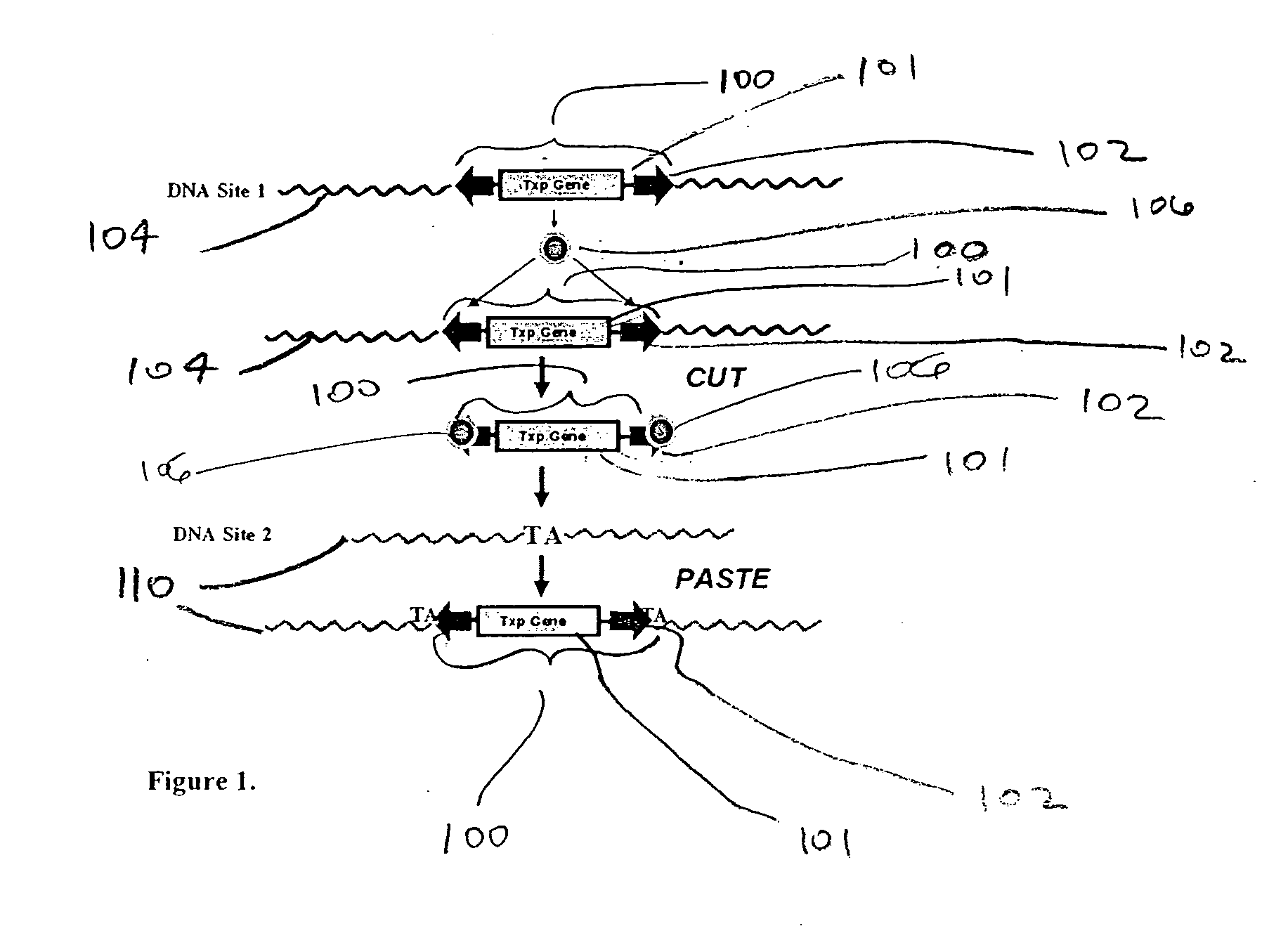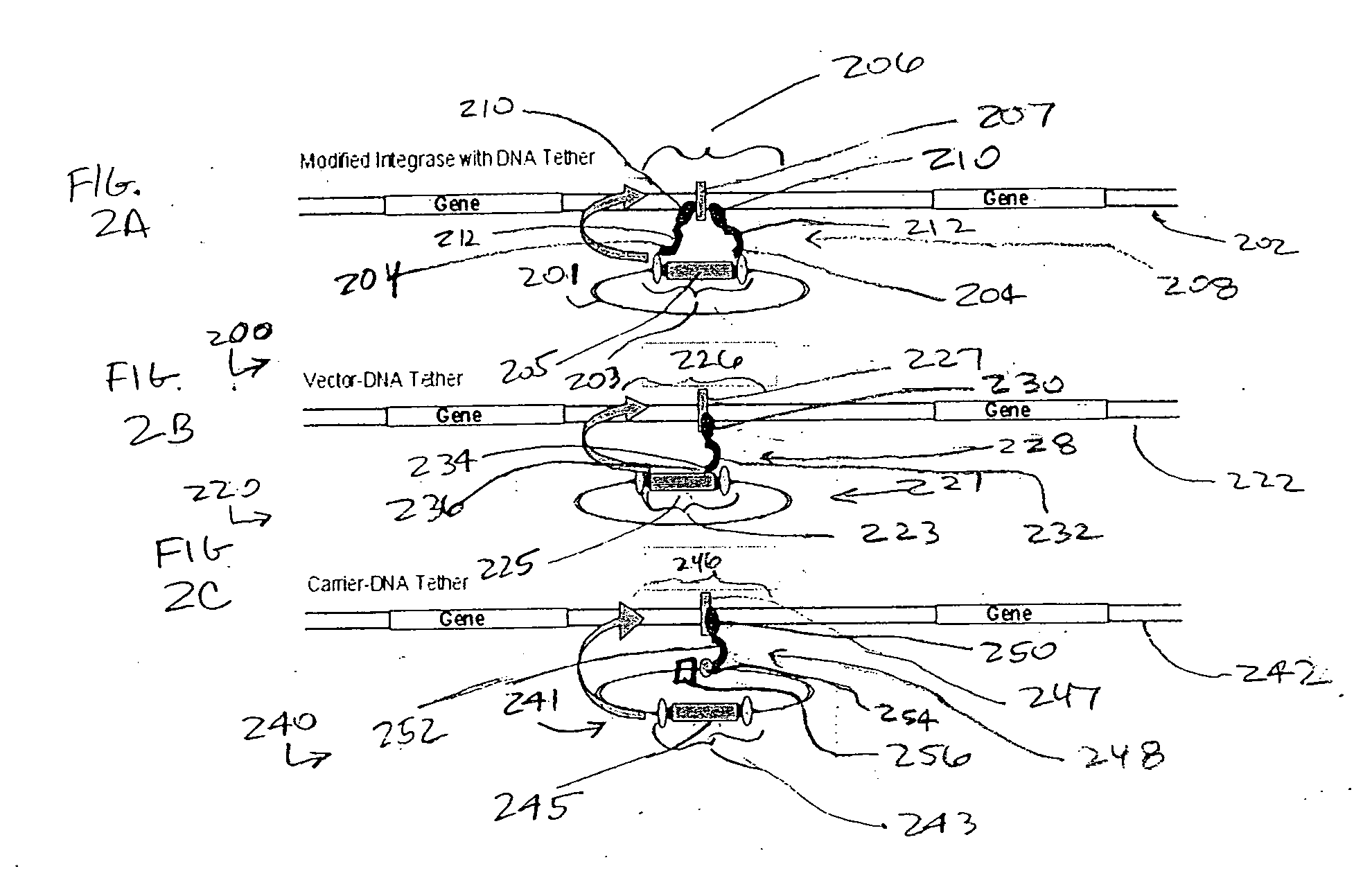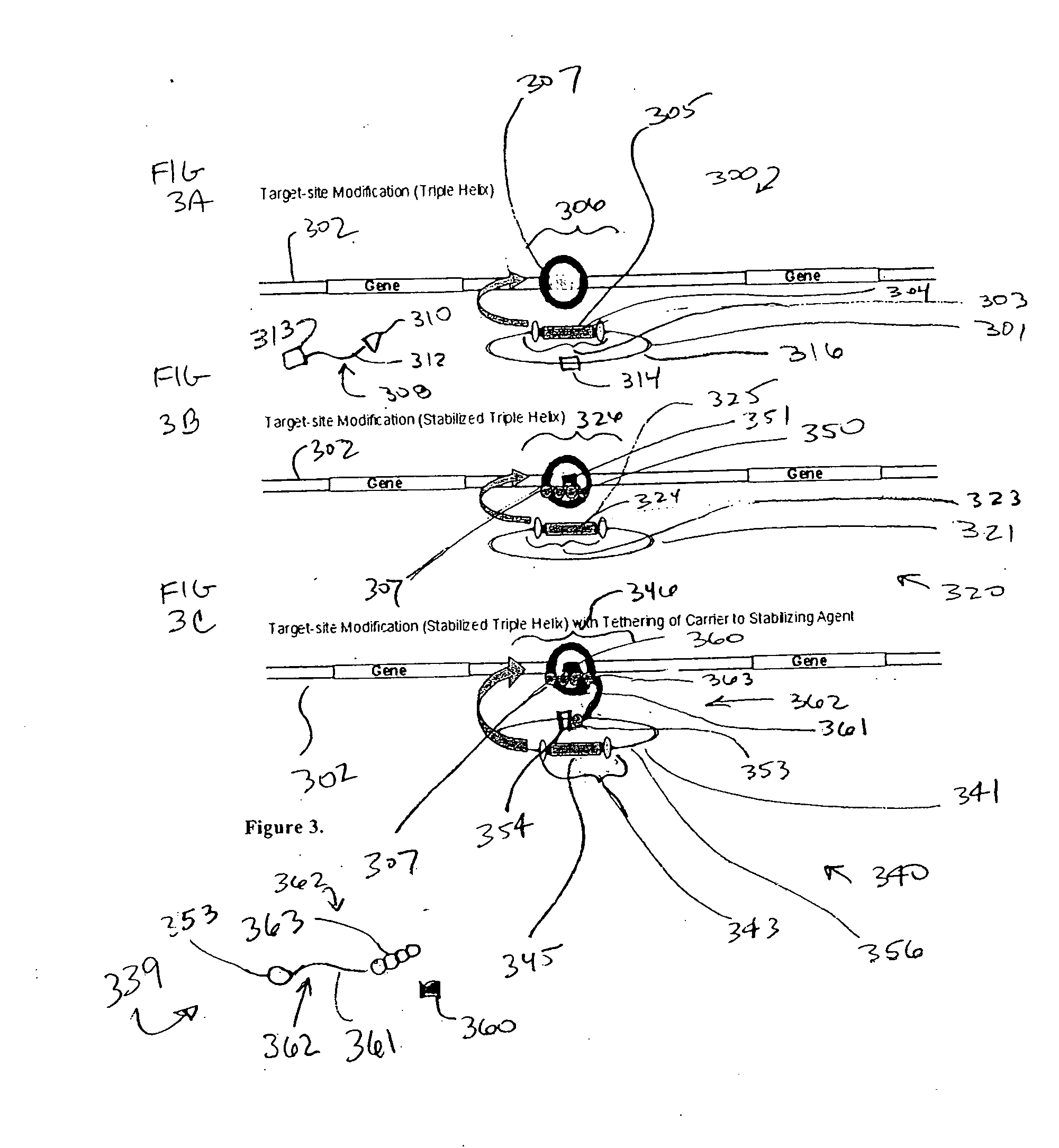Integration-site directed vector systems
a vector system and integrated site technology, applied in the field of integrated site directed vector systems, can solve the problems of disrupting the patient's genes, cancer or other unwanted effects, and not having a consistently safe and successful way to introduce genes into patients, and achieve the effect of reducing or eliminating unwanted effects, without compromising the performance of the carrier
- Summary
- Abstract
- Description
- Claims
- Application Information
AI Technical Summary
Benefits of technology
Problems solved by technology
Method used
Image
Examples
example 2
RecA-Mediated Site-Specific Integration
[0092] A similar approach to Example 1 will be tested in zebrafish to assess the ability of RecA-coated filaments to promote site-specific integration of Sleeping Beauty transposons. For this, RecA-coated pitx2 filaments will be injected into the 1- to 2-cell zebrafish embryo with SB11 RNA and a Sleeping Beauty transposon that expresses the green fluorescent protein (GFP) from an EF-1α promoter. Following injection, embryos that are expressing GFP will be harvested at 24 hours post-fertilization for DNA isolation. DNA will be analyzed for site-specific activity by PCR amplification using the same approach as above. Once site-specific integration activity is observed in early embryos, similar injected embryos will be raised to adulthood and their progeny will be analyzed to determine the frequency of site-specific integration of Sleeping Beauty transposons.
example 3
Molecular Tethering of Carrier Molecules to RecA-Deformed DNA for Site-Specific Targeting of Integration
[0093] The ability of RecA-gal4 and Rad51-gal4 coated pitx2 filaments will be tested for their ability to promote site-specific integration of Sleeping Beauty transposons by tethering the Sleeping Beauty transposon to specific regions in HeLa cells. For this, both N-terminal and C-terminal fusion proteins of gal4 to RecA and Rad51 will be produced. A 250-bp piece of pitx2 DNA from exon 4 will be coated with these fusion proteins either with or with out native RecA or Rad51. These filaments will be transfected into cells with pCMV-SB11 and pT2 / mCaggs-neo / UAS. pT2 / mCaggs-neo / UAS has UAS sites that are specific for gal4 in the vector backbone next to the antibiotic resistance gene. Cells will be selected with G418 for 12 days in culture. DNA will be isolated, and site-specific activity will be assessed by PCR amplification with 4 primer sets as above. Once site-specific integration ...
example 4
Morphilino-Induced DNA Deformation of DNA for Targeted Integration
[0094] Morpholinos will also be tested to promote site-specific integration of Sleeping Beauty transposons in zebrafish. Morpholinos, because of their strong binding affinity for DNA, which is greater than native DNA-to-DNA hybridization, may bind to double-stranded DNA at a target site. The strand of native DNA that is displaced by the morpholino will then be available for interaction with a transposase so that a transposon may be introduced at the site of the target DNA. Similar to the approach above with RecA-coated filaments, a morpholino against the fourth exon of pitx2 will be injected into the 1- to 2-cell zebrafish embryo with SB11 RNA and a Sleeping Beauty transposon that expresses GFP from an EF-1α promoter. Following injection, embryos that are expressing GFP will be harvested at 24 hours post-fertilization for DNA isolation. DNA will be analyzed for site-specific activity by PCR amplification. Once site-s...
PUM
| Property | Measurement | Unit |
|---|---|---|
| binding affinity | aaaaa | aaaaa |
| specific binding affinity | aaaaa | aaaaa |
| acid | aaaaa | aaaaa |
Abstract
Description
Claims
Application Information
 Login to View More
Login to View More - R&D
- Intellectual Property
- Life Sciences
- Materials
- Tech Scout
- Unparalleled Data Quality
- Higher Quality Content
- 60% Fewer Hallucinations
Browse by: Latest US Patents, China's latest patents, Technical Efficacy Thesaurus, Application Domain, Technology Topic, Popular Technical Reports.
© 2025 PatSnap. All rights reserved.Legal|Privacy policy|Modern Slavery Act Transparency Statement|Sitemap|About US| Contact US: help@patsnap.com



